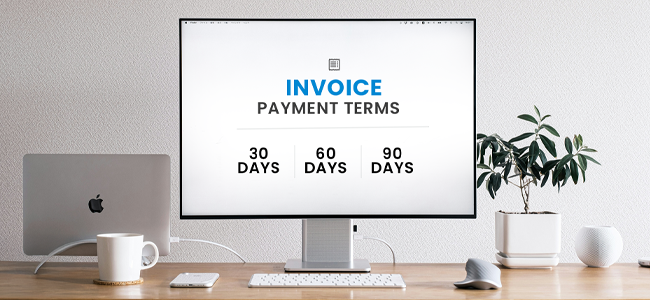# Difference Makers - Integritax
Important Notice
As mentioned by the Minister of Finance in his March 2025 Budget speech, changes have been proposed to the Employment Tax Incentive Act. Further details on the impact of this proposal, which came into effect on 1 April 2025 can be found on the following link.
The March edition of the OTO’s Fair Play newsletter is now available. This edition contains content on reflections on the OTO’s 2024/25 financial year, bank verifications for VAT refund purposes and the impact of perceived fairness in the tax system on tax compliance.

Lead, Influence, Inspire
SAICA submission
SAICA submission to Parliament on the 2025 Budget Review document
Contribute your view
SARS has published a Draft Interpretation Note which deals with the taxation of amounts received by or accrued to missionaries for public comment. Comments can be sent to SAICA and are due by Friday, 2 May 2025
Tax Tips
Employers are to note that employer annual EMP 501 declarations are due for submission to SARS. Submission dates run from Tuesday, 1 April 2025 to Saturday, 31 May 2025. As previously advised, SARS has introduced updates to e@syFile and employers are encouraged to use this new version when submitting their declarations. To download the latest version of e@syFile follow this link.

CPD
Save the dates:
For insights into what the Tax in Practice webcast entails, please access here.
For other events, please visit the SAICA Events bookings portal.
Delegates who book and attend live SAICA webcasts or face-to-face events will receive a Confirmation of Attendance email within 8 to 10 days of attendance confirming that the registered delegate attended the stated webcast or event, as well as the duration of the webcast or event. Certain institutions and regulators may however require a Confirmation of Completion certificate as evidence of verifiable CPD.
To obtain a Confirmation of Completion certificate, whether for attending a live webcast or event or watching a recording on the SAICA eVolve system, you have to successfully complete the relevant assessment and achieve a pass mark of at least 75%. Once the assessment has been passed you can download a Confirmation of Completion certificate. SAICA accepts both the Confirmation of Attendance and the Confirmation of Completion certificates as evidence of verifiable CPD completed by members. The learning and assessment must have taken place in the period under review (i.e. 1 January - 31 December) so that the report reflects such.
Please email seminarsandevents@saica.co.za to receive your CPD confirmation.
Please refer to the SAICA CPD FAQ document for further information.
Integritax quizzes
Access eVOLVE our new online Learner Management System (LMS) and answer the Integritax monthly quizzes to earn up to 30 minutes CPD per article.
Integritax journal
The following articles, which over an opportunity to earn CPD questions (30 minutes CPD per article) are available in the April edition of the Integritax Journal:
- Section 24C and contracts other than construction. This article examines instances outside of the construction industry when section 24C of the Income Tax Act is likely to apply (Author: Deborah Tickle)
- The UK’s corporation tax instalment payment rules. This article provides guidance on the application of the corporation tax instalment rules in the UK (Author: Leontia Doran)
- The 2024 amendments to the foreign tax rebate. This article examines the most recent amendments to section 6qaut of the Income Tax Act, which came into effect as result of the 2024 Taxation Laws Amendment Act (Author: Duncan McAllister)
The following (non-CPD articles) are also included in the April edition of the journal:
- SARS updates. This article includes updates on SARS deadlines for third party reporting, technical difficulties with the donations tax form and interest due on outstanding VAT refunds (Author: Somaya Khaki)
- Once I caught a fish alive (Author: Nomvula Masehla)
Technical Resources And Support

Tax operational query support
If you have any SARS operational queries that you have been unable to resolve by following the SARS escalation channels, you may log these on the SAICA Member Portal for referral to SARS.
SAICA technical resources
An archive of resources or information published on, inter alia, the SARS and National Treasury websites can be accessed on Tax: Legal and Policy.
Contemporary Gazette
Members can access the Contemporary Gazette which provides, inter alia, a comprehensive database of new laws. To login, use the following details:
- Login name: saica(membership number), for example saica123456789.
- Password: membership number.
Legal and policy
See the latest on the SAICA Legal and Policy, including:
These five cases were heard together because they raise overlapping questions about the interpretation and application of section 105 of the TAA. The TAA introduced a uniform regime for objecting to assessments and decisions by SARS and appealing such assessments and decisions to the Tax Court.
- Updates by SARS to the Customs and Excise Bonds policy to provide clarity on consignor bonds, explain the rule for the correction of surety bonds, include Rule 12.08 and remove financial institution and bank names.
- SARS guide on anti-dumping, countervailing, and safeguard duties
- Commissioner for the South African Revenue Service and Another v Richards Bay Coal Terminal (Pty) Ltd (CCT 104/23) [2025] ZACC 3 (31 March 2025)
Customs and Excise Act 91 of 1964 - tariff determination - section 47(9)(e) - wide appeal - review in terms of Promotion of Administrative Justice Act 3 of 2000, section 33 of the Constitution, or alternatively, the principle of legality - rule 53 record - rule 30A application - review jurisdiction - whether taxpayer confined to a wide appeal.
- Binding Class Ruling 92 and Binding Private Ruling 414 which deal with the application of the proviso to section 8EA(3)
- Interpretation Note 138 which deals with determining the calorific value of coal for purposes of the royalty is now available.
- A summary of the Biskit (Pty) Ltd v Commissioner for the South African Revenue Services (6156/2023) [2025] ZAFSHC 71 (13 March 2025) case in which the Court had to assess whether a decision by SARS to seize goods was procedurally fair.
- A summary of the X and Another v Commissioner for the South African Revenue Service (52/2023) [2024] ZATC 12 (2 December 2024) case in which the Court had to decide whether a taxpayer’s objection to SARS’ assessment was valid given they had failed to provide requested supporting documents.
- A summary of the Aveng Mining Shafts and Underground v Commissioner for the South African Revenue Service (1192/2023) [2025] ZASCA 20 (17 March 2025) case in which the Court had to decide whether entertainment costs incurred by a taxpayer involved in the mining industry were subject to a VAT deduction under section 17(2)(a)(i).
- SARS FAQ’s on the domestic reverse charge regulations and supplies of electronic services.
General
Read the requirements for membership and apply for the below vacancies:
- Central Region Tax Sub-committee (1 x vacancy)
- Northern Region Tax Sub-committee (1x vacancy)
- National Tax Operations (1 x vacancy for Small or Medium Practice and 1 x vacancy for any constituency)
Tax Practitioners
If you are a tax practitioner looking to deregister your SAICA tax practitioner profile, please refer to the following document for guidance on how to complete this task.
SARS has issued a guide on the criteria for registration of tax practitioners. Follow this link to access the guide.
As advised in late 2024, SARS’ updated Tax Practitioner Readiness Programme will come into effect in January 2025. Changes in this regard will apply with effect from 13 January 2025 and any prospective tax practitioners will be expected to pass the assessment based on the updated learning material. For more information please follow the link.
The SAICA 2024 Tax Practitioner Annual Declaration is no longer accessible on the SAICA Member Portal. As previously communicated, tax practitioner declarations submitted after Friday, 31 January 2025 will be considered late declarations. Late declarations or non-responsiveness constitutes non-compliance with the SAICA by-laws, and tax practitioners who have not submitted or submitted the declaration late will be referred to SAICA’s Legal and Discipline department for sanctioning as per SAICA’s disciplinary code. Tax practitioners who are found to have made dishonest declarations will also be referred to the SAICA Legal and Discipline department for sanctioning, as this amounts to unethical behaviour and is in contravention of the SAICA Code of Professional Conduct. A notice of non-compliance will be issued to affected tax practitioners.
Tax practitioners selected for monitoring were requested to submit evidence of compliance with CPD requirements and a commissioned criminal free status affidavit by Friday, 7 February 2025. SAICA is currently processing the responses and evidence submitted to confirm compliance, this in preparation for submission to SARS for the Recognised Controlling Body (RCB) Compliance report. Disciplinary action will follow in line with SAICA’s Disciplinary Code and Procedures for tax practitioners who were selected for monitoring and failed to respond or provide the requested evidence. Monitoring outcome notices will be issued to all tax practitioners selected for monitoring once the member compliance unit have finalised the process. Read the Tax Practitioner Obligation webpage for more information on the regulatory requirements and registration/deregistration processes relating to tax practitioners.
The SARS MobiApp is one of the digital platforms that enables tax practitioners to access profile information, monitor compliance with tax obligations, and transact on behalf of their clients easily and effortlessly. To support tax practitioners in managing their clients’ tax matters, a comprehensive SARS guide on using SARS MobiApp has been developed.
The March edition of SARS’ Tax Practitioner Connect newsletter is now available. This edition contains content on the donations tax form and how to make reportable arrangement submissions via eFiling.
Tax Related Comments ,Compliments & Complaints
Tax related comments, compliments and complaints Email SAICA




